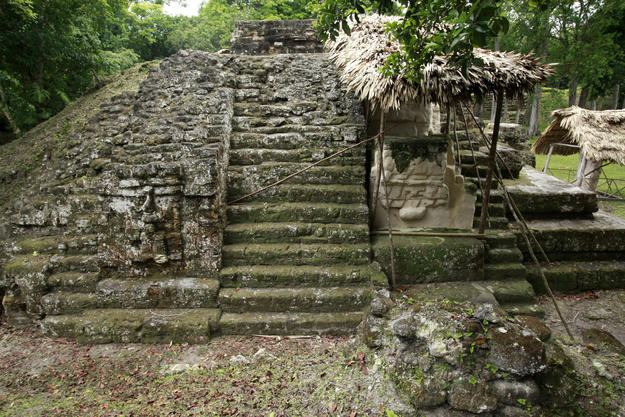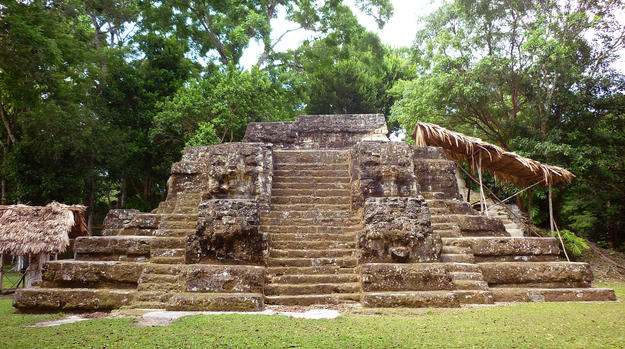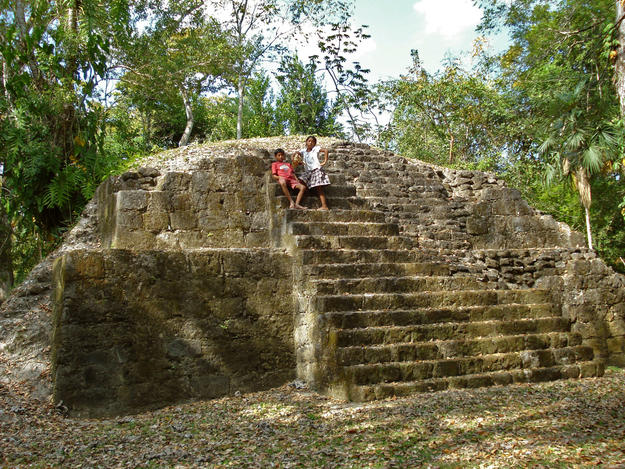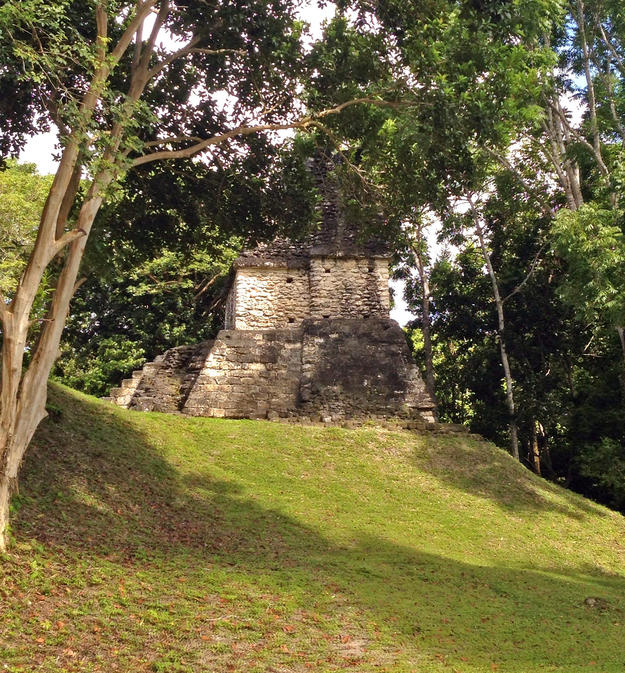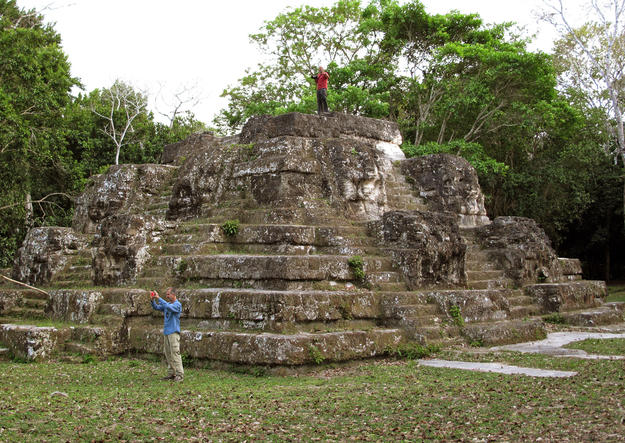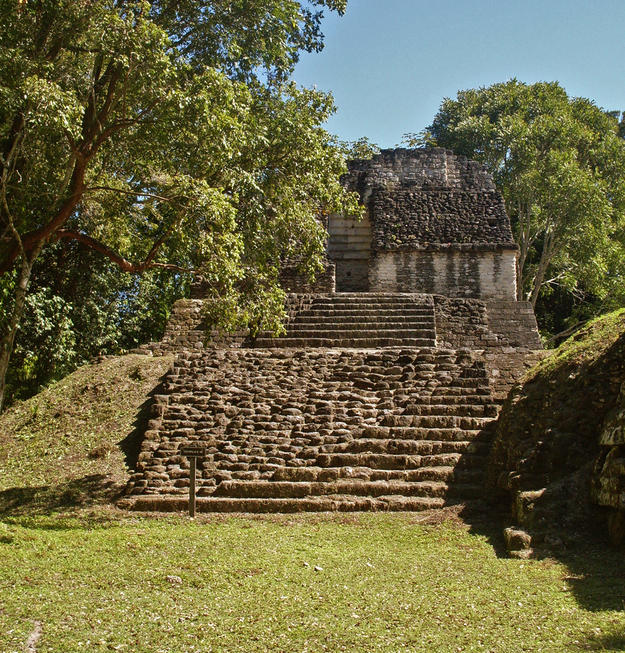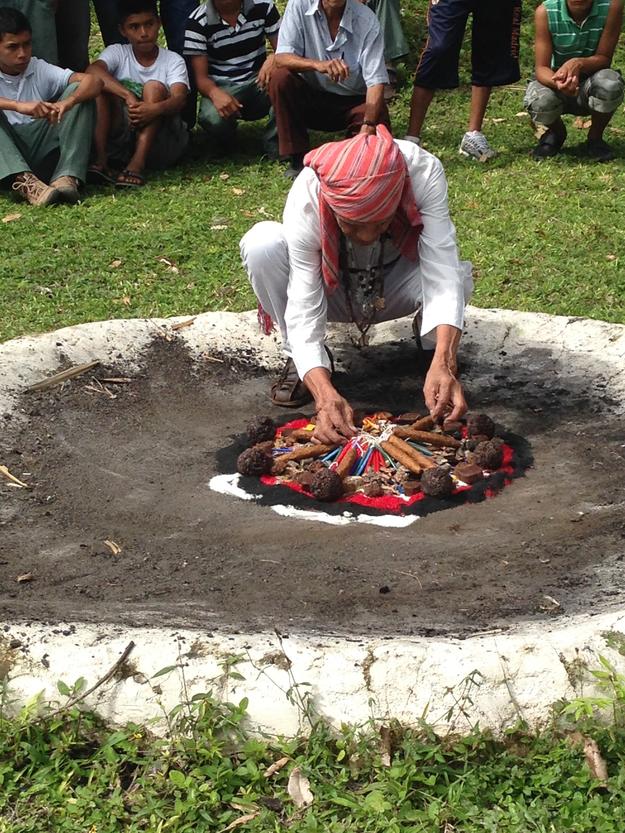Uaxactun
Located in the Petén Department in northern Guatemala, Uaxactun was among the first Maya archaeological sites excavated in the area known as the Maya Lowlands. Rediscovered in 1916 by famed archaeologist Sylvanus Morley (1883–1948), formal research and excavation began in 1924. In these pioneering digs, archaeologists developed methodologies for Mesoamerican studies that are still used today, including the denomination of E-Groups—a building cluster typology found in many lowland Maya sites and commonly assumed to have served as astronomical observatories. The earliest known public structures in Uaxactun date back to 600 B.C., yet archaeological research suggests that the site may have been occupied 400 years earlier. It was one of the longest-occupied Maya settlements.
Uaxactun has been a national landmark since 1970. It is located within the Maya Biosphere Reserve within Tikal National Park, an area that has great tourism and development potential. At present the site receives few tourists, as many people are not aware of its proximity and easy access from the popular areas of Tikal. It was included on the 2014 World Monuments Watch in order to increase awareness of this potential as a tourist destination and to bring attention to its conservation needs. Many of its ancient structures were deteriorating at the time the Watch was announced, including 18 stucco masks.
Community and institutional collaboration leads to preservation
In collaboration with Guatemala’s Ministry of Culture and Sports, WMF first allocated funds to the development of a management plan for Uaxactun that would help increase the capabilities of institutions related to the site, promote sustainable development of the area, and establish educational opportunities, conservation programs, and a system of protection for the archaeological remains. Members of the local community participated in the drafting of the plan through a series of workshops in which the significance of heritage sites and the opportunities and risks that they present were discussed. Local residents also attended Watch Day, which took place in October 2014 and included a Maya ceremony. Participants enjoyed a tour of the archeological remains and engaged in conversations about Tikal National Park, the Watch, the importance of the site, and their own involvement with the ruins as stewards.
Additionally, WMF supported the development of a conservation plan for Uaxactun in 2015, which was completed in January 2016. The fieldwork outlined in this document, which includes surveys and documentation, cleaning, removal of cement interventions, restitution of stone elements, and control of moisture, erosion and biological growth was carried out that same year, and focused on priority interventions on the E-Group structures.
The ancient Mayan remains of Uaxactun are of the utmost cultural importance and represent an opportunity to implement sustainable tourism strategies in Guatemala. Conservation of the remains’ historic fabric will prevent further immediate damage to the monuments, while the conservation management plan will provide a framework for generations to come.

